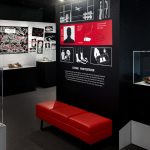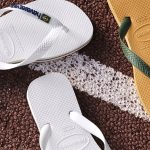With the last of the first quarter reports now filed with the SEC, Sports Executive Weekly presents a wrap-up of industry public company results presented in the charts located here. Results are posted for those companies that have reported results for the period ended closest to the end of March.
Though the second quarter saw a flurry of acquisition announcements, including Payless acquiring Stride Rite, the Hidary Group picking up Everlast, and Puma being acquired by PPR, the first quarter was relatively tame in terms of acquisitions, mergers and other outside forces that might cause unusual shifts in the results. More companies left the chart as Cutter & Buck effectively went private after being acquired by a European private equity firm and Icon Health and Fitness has stopped reporting results to the SEC. And Timberland has delayed the filing of its first quarter 10-Q report.
SEWs review of the fiscal first quarter shows healthy sales for the industry when looking at the overall market with sales increasing in the low-teens, but profits were only up in the mid-singles. However, these top line results mask a major dichotomy between Softgoods and Hardgoods. On the Softgoods end, the top-line grew in the mid-teens and the bottom line grew in the high-singles. Hardgoods, however, saw a mid-singles sales gain turn sharply downward before reaching the bottom line.
Because the report is not a clear picture of the entire industry, SEW feels the total numbers are less significant than the trending information provided in the percentage increases and decreases. Hidden in the growth and contractions was a 40 basis point decrease in overall Return on Sales to 9.1% of sales. Softgoods slipped in this metric, but it was Hardgoods that really felt a downturn as ROS slid 80 basis points to 3.7% of sales.
The Softgoods market continues to be driven by newcomers to the public company life as Heelys and Crocs both posted triple-digit sales and earnings gains. Excluding the two from the results sees sales growth take a 120 basis point hit, while bottom line growth saw a 240 basis points impact.
Outdoor Footwear posted the quickest growth rates on both the top and bottom line. Sales grew in the mid-20s, while the bottom line jumped just over 60%. The fast net income growth came as a result of Crocs nearly quadrupled growth in net income. Without Crocs, net income grew in the mid-40s for the category. Athletic Footwear held back the Outdoor Footwear guys, though still posting positive results. Sales grew approximately 11% with net income growing 6.5%. As a whole, Footwear vendors saw sales grow 13.4% with net income nearly matching the rate, up 12.2%. Apparel outpaced Footwear on the topline, growing 18.7%, and on the bottom, where it grew 12.6%.
In Hardgoods (see chart page 5), top line growth far outpaced bottom line, but not at all in a good way. Sales grew in the mid-singles when looking at the overall Hardgoods industry, while profits slid approximately 15% for the period. A large portion of this dichotomy can be attributed to Amer Sports ongoing integration as every Amer brand but Suunto saw net income decrease for the quarter, or net loss expand. Even Suunto, while up, was up only $700,000 in absolute dollar terms, having little effect on the overall. However, all blame should not be placed on Amer as over half the companies included in the report posted bottom line declines.
Golf sales grew in the low-singles due to strength at Callaway (likely because of the FT-i driver) and at Adams Golf (likely due to the success of the companys hybrid program), while all others were down with decreases ranging from the low-singles to the mid-teens. Fitness came in just below flat as growth at Cybex, Brunswicks fitness division and Precor were offset by decreases at Nautilus. Snow Sports were soft for the quarter, down in the high-singles as a whole with only K2 Sports showing sales just above flat. The remaining Snow Sports companies saw double-digit decreases.
The bottom line picture was quite different from sales as Golf came in just above flat, but Fitness fell in the mid-teens. The sales woes that plagued Snow Sports in the quarter compounded in a weak season as the category saw last years net loss expand this year in the high-teens.
While Softgoods vendors reported a strong first quarter, the Hardgoods camp may already be feeling the effects of higher gas prices and the slowing housing market. Whether these exterior forces truly are affecting the consumers buying habits or not, next weeks Sports Executive Weekly first quarter retail review will show what actually happened on the front lines.















